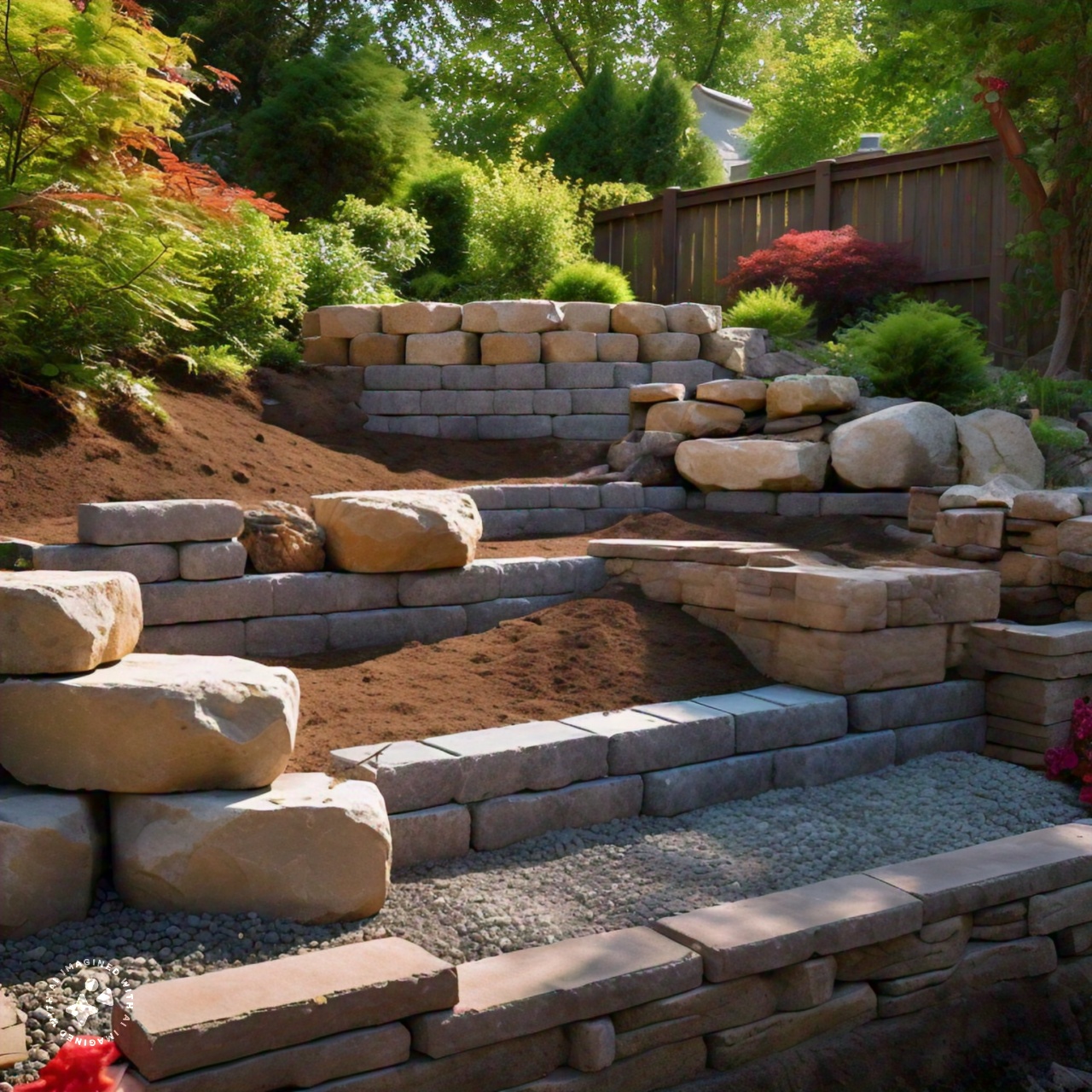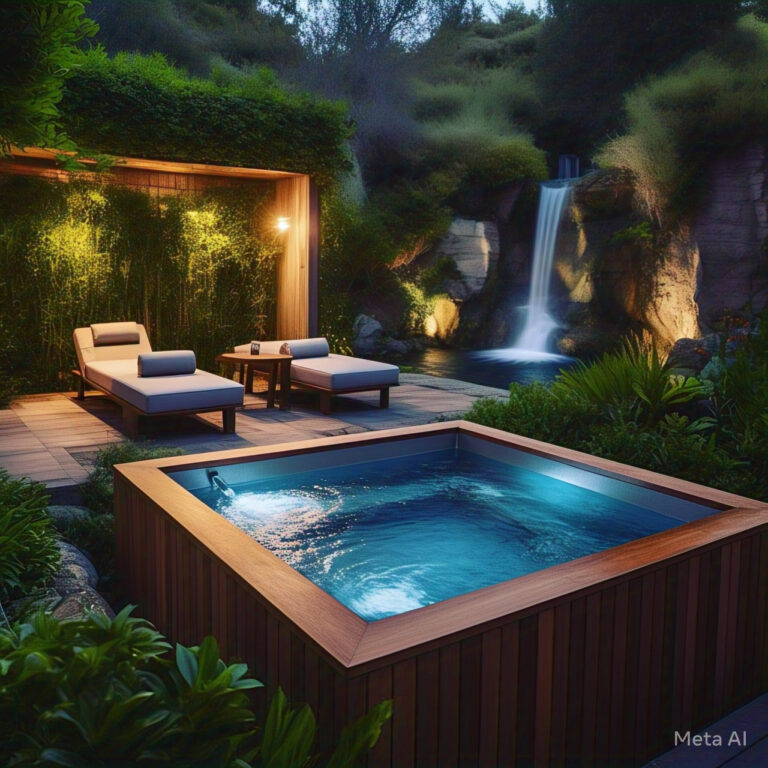Choosing the right materials is crucial when planning a retaining wall that needs to be both durable and visually appealing. Natural stone offers timeless beauty and strength, while concrete blocks provide versatility and ease of installation. If you’re looking for an eco-friendly option, gabions might be ideal. Each material brings its unique benefits and challenges, making the decision more complex than it seems. So, how do you decide which one is right for your project? Let’s explore the strengths and weaknesses of each to help you make an informed choice.
Natural Stone
Natural stone offers durability and aesthetic appeal when building a retaining wall.
Natural stone blends seamlessly with various landscapes, giving your garden or yard a timeless look.
It’s not just about looks; natural stone is powerful and can withstand heavy loads and harsh weather conditions.
Installation might be a bit labor-intensive, but the result is worth it.
You can choose from a variety of stones, such as granite, limestone, and sandstone, each with a unique texture and color.
Plus, natural stone requires minimal maintenance.
Just make sure to drain water away to prevent erosion properly.
Natural stone will make your retaining wall functional and visually stunning.
Concrete Blocks
Concrete blocks offer a practical and versatile solution for easily constructing a retaining wall. They’re durable, cost-effective, and come in various sizes and shapes to suit your design needs. You can stack them quickly, making the building process straightforward even for DIY enthusiasts. Additionally, concrete blocks are engineered for strength, ensuring your retaining wall stands the test of time.
Based on your project’s requirements, choose from interlocking blocks or traditional rectangular ones. Interlocking blocks provide extra stability and often eliminate the need for mortar. You can find blocks with different textures and colors for added aesthetic appeal.
Don’t forget to incorporate drainage solutions to prevent water buildup behind your wall, which can compromise its integrity over time.
Gabions
Gabions offers a flexible and robust solution for creating retaining walls that blend seamlessly into natural landscapes. They are essentially wire mesh baskets filled with stones or other materials. Gabions are great for erosion control and can adapt to ground movement without losing structural integrity.
Installing gabions is straightforward; stack the mesh cages with suitable rocks. The gaps between the stones allow water to pass through, reducing pressure buildup behind the wall. Gabions aren’t only durable and environmentally friendly, as they use natural materials. Plus, they’re cost-effective and require minimal maintenance.
You can even plant vegetation in the gaps for added aesthetic appeal, making them versatile for any landscape.
Timber
Timber retaining walls offer a natural and rustic look, making them popular for residential landscaping projects. They can easily be blended into your garden, creating a harmonious and inviting space.
Timber is relatively affordable and straightforward, allowing for quick installation. However, it’s crucial to choose treated wood to guard against rot, termites, and other forms of decay. Regular maintenance, such as sealing and staining, will prolong the life of your timber wall.
Remember that timber may not be the best option for very high walls or areas with extreme moisture. Despite these considerations, a well-maintained timber retaining wall can last many years, providing functionality and aesthetic appeal.
Brick
Brick retaining walls combine durability with a classic aesthetic, making them versatile for various landscaping and structural needs. When you choose brick, you’re opting for a material that’s strong and timeless. Bricks can withstand harsh weather conditions and resist erosion, ensuring your wall remains sturdy for years.
Plus, their uniform shape allows for precise construction, giving you a neat and polished look. Maintenance is straightforward. Regular cleaning and occasional repointing keep your wall looking fresh. You can also choose from various colors and finishes to match your home’s exterior or garden design.
Whether aiming for a traditional or modern look, brick offers flexibility and lasting appeal for your retaining wall project.
Frequently Asked Questions
How Do I Ensure Proper Drainage Behind My Retaining Wall?
To ensure proper drainage behind your retaining wall, you should follow these steps:
- Install a perforated pipe at the base.
- Use gravel or crushed stone for backfill.
- Incorporate drainage fabric.
These measures are crucial to prevent water buildup and maintain the wall’s stability.
What Are the Best Foundation Practices for Retaining Walls?
To ensure a strong foundation for your retaining wall:
- Dig a trench below the frost line.
- Use compacted gravel for stability.
- Incorporate a perforated pipe for drainage.
These steps prevent shifting and promote longevity.
Are There Eco-Friendly Options for Retaining Wall Construction?
Yes, you can choose eco-friendly options for retaining wall construction.
Recycled concrete, reclaimed wood, and natural stone are great choices.
These materials reduce environmental impact while providing durability and aesthetic appeal for your project.
How Do I Prevent Soil Erosion on the Retaining Wall?
You can prevent soil erosion on the retaining wall by installing proper drainage systems.
Using geotextile fabrics can also help in preventing erosion.
Planting ground cover vegetation is another effective method to protect the soil.
Make sure you regularly inspect and maintain the wall to ensure long-term stability.
What Permits or Regulations Should I Be Aware of Before Building a Retaining Wall?
You’ll need to check local building codes and zoning regulations. Obtain necessary permits before starting.
Contact your local municipality or county office to ensure you comply with all legal requirements for building a retaining wall.
Conclusion
You’ve got some great options when choosing materials for a durable and attractive retaining wall. Natural stone blends beautifully with any landscape and requires little upkeep.
Concrete blocks offer versatility and ease of installation. Gabions provides a flexible, eco-friendly solution with excellent erosion control.
Each material has unique strengths, so consider your specific needs and preferences. With Daily Landscaping, you’ll have a stunning and long-lasting retaining wall that enhances your outdoor space.







